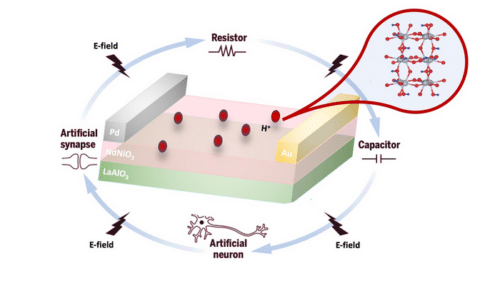What if a computer could learn to rewire its circuits based on the information it receives?

A multi-institutional collaboration, which includes the DOE’s Argonne National Laboratory, has created a material that can be used to create computer chips that can do precisely that. It does this by using so-called “neuromorphic” circuits and computer architecture to mimic brain functions. Professor at Purdue University Shriram Ramanathan served as the team’s leader.
“Human brains can actually change as a result of learning new things,” said Subramanian Sankaranarayanan, a paper co-author with a joint appointment at Argonne and the University of Illinois Chicago. “We have now created a device for machines to reconfigure their circuits in a brain-like way.”
The fundamental component of the novel gadget is a perovskite nickelate, which is composed of neodymium, nickel, and oxygen (NdNiO3). The scientists added electrodes to this material, infusing it with hydrogen to enable the application of electrical pulses at various voltages. “How much hydrogen is in the nickelate, and where it is, changes the electronic properties,” Sankaranarayanan said. “And we can change its location and concentration with different electrical pulses.”
“This material has a many-layered personality,” added Hua Zhou, a paper co-author and Argonne physicist. “It has the two usual functions of every-day electronics — the turning on and blocking of electrical current as well as the storing and release of electricity. What’s really new and striking is the addition of two functions similar to the separate behavior of synapses and neurons in the brain.”
The team used computational and experimental methods to characterise what occurs in the nickelate device at various voltages. The outcomes of the experiment showed that the flow of hydrogen ions within the nickelate may be readily changed by changing the voltage. Inducing neuron-like action, a certain voltage concentrates hydrogen at the nickelate core. The hydrogen is shuttled out of the centre by a separate voltage, resulting in synapse-like activity. The locations and concentration of hydrogen that arise cause the on-off currents of computer chips at yet different voltages.







